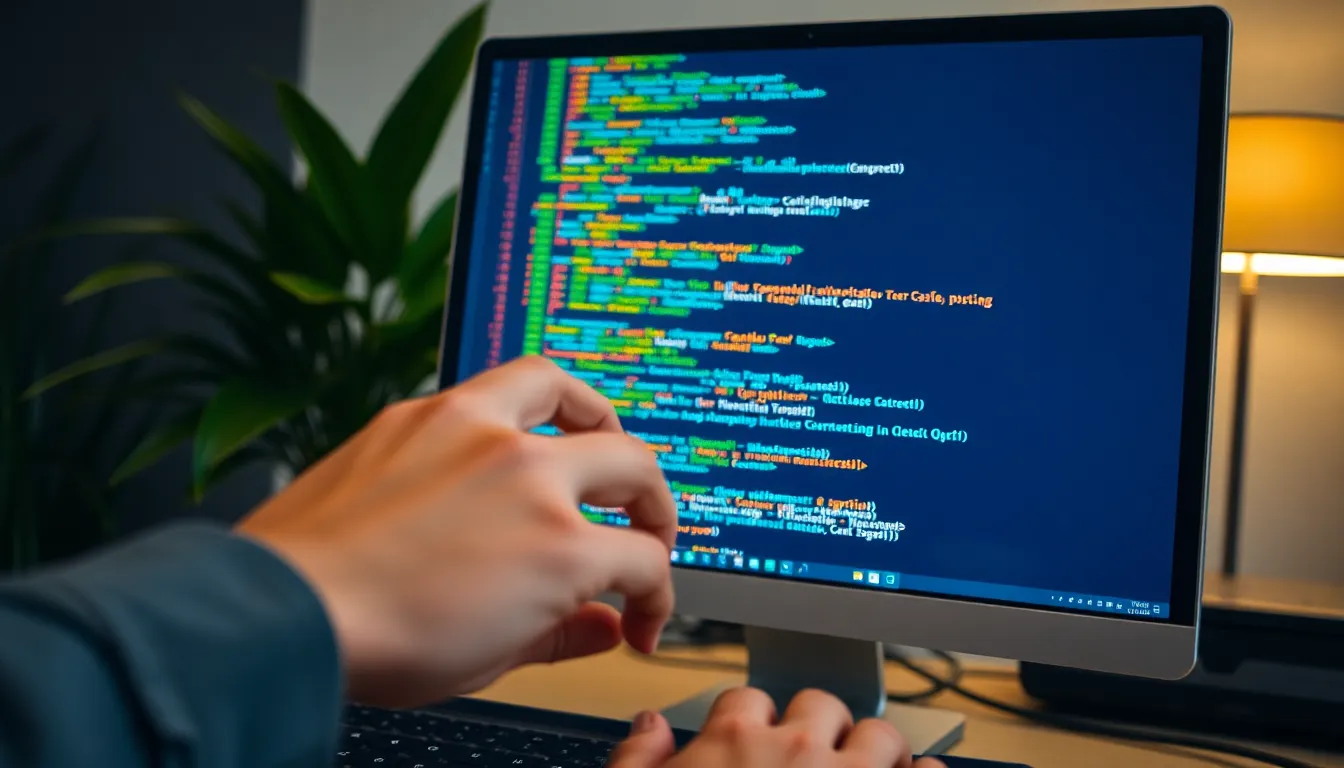Table of Contents
ToggleWhen diving into the world of Python, one might stumble upon the magical duo: try and except. Think of them as your trusty safety net in the circus of coding. They catch those pesky errors that can turn a flawless performance into a faceplant. No one likes the dreaded “Oops, something went wrong” message, right?
Understanding Try and Except in Python 2579xao6
Try and except statements in Python facilitate error handling, enabling programmers to manage exceptions during runtime. This structured approach prevents the program from crashing when unexpected issues arise.
Definition of Try and Except
Try defines a block of code that Python attempts to execute. If an error occurs within this block, the except statement handles it. Programmers specify the type of exception to catch, allowing finer control over how to respond to different errors. Each try block must be followed by an except block to provide a mechanism for error recovery.
Purpose of Try and Except
The primary purpose of try and except statements is to maintain program stability. By capturing exceptions, developers can prevent abrupt terminations and provide alternative actions, such as default values or user notifications. This design enhances user experience by ensuring smoother program functionality even in error-prone scenarios. Handling exceptions proactively minimizes debugging time and helps maintain clean, robust code.
How Try and Except Works

Understanding how try and except functions is crucial for effective error handling in Python. These statements help in managing exceptions, which enhances code reliability.
Syntax of Try and Except
The syntax for try and except is straightforward. A programmer starts with the try keyword, followed by a block of code intended for execution. Next, they use the except keyword to specify the actions taken if an error occurs. This can include catching specific exceptions or general errors. Here’s the basic format:
try:
# Code that may cause an exception
except ExceptionType:
# Code that runs if the specified exception occurs
Developers can use multiple except blocks to target different exception types, providing targeted responses to specific issues.
Flow of Execution
Execution during a try and except block follows a clear path. Initially, Python attempts to execute the code in the try section. If an error arises, it immediately transitions to the corresponding except block, executing the specified error handling code. If no errors occur, the except section is skipped. This sequential handling prevents the program from crashing, allowing alternative code paths to engage. The execution flow ensures that the program remains operational under various conditions, effectively managing potential failures.
Common Use Cases
“Try” and “except” blocks find various applications in Python programming, primarily in managing exceptions and maintaining program stability.
Handling Exceptions
Developers use “try” and “except” to handle exceptions gracefully. This mechanism allows programmers to isolate error-prone code. By placing potentially problematic code within a try block, any exceptions that arise can be caught in the corresponding except block. For example, if a variable is expected to hold an integer but contains a string, the program doesn’t crash. Instead, it can inform the user of the issue without losing the entire execution context.
Avoiding Crashes
Using “try” and “except” significantly mitigates the risk of program crashes. When unforeseen errors occur, conventional execution paths lead to abrupt terminations. Implementing error handling means the program can continue running by falling back on alternative paths. For instance, if reading from a file fails due to a missing path, the except block can take corrective action or prompt the user for a new input. This structured approach contributes substantially to user experience by ensuring the application remains operational, even amid unforeseen challenges.
Best Practices
Implementing best practices with try and except statements enhances error handling in Python. Attention to detail promotes better program stability and user experience.
Specific Exception Types
Catching specific exception types ensures precise error handling. Developers benefit from identifying the types of exceptions to manage. For example, using except ValueError allows the program to respond effectively to input errors. This specificity helps maintain flow and clarity in code. Handling multiple exceptions can also be beneficial. Developers create distinct except blocks for each exception type, enabling targeted responses and fewer mismanaged errors. Specific exception handling leads to transparent outputs that improve debugging and user understanding.
Keeping Code Readable
Readability in code is crucial for maintenance and collaboration. Clearly structured try and except blocks promote easier understanding. For instance, separating logical components within the try block simplifies navigation through complex code. Using comments effectively labels blocks, guiding others in understanding your intentions. Consistent formatting for exception blocks further enhances clarity. Developers should keep indentation uniform and spacing consistent. Following a logical order when arranging exceptions improves flow and accessibility. Clear and readable code not only aids individual developers but also teams tackling larger projects.
Understanding try and except in Python is crucial for any developer looking to create robust applications. These constructs not only prevent program crashes but also enhance user experience by gracefully handling errors. By implementing best practices such as catching specific exceptions and maintaining readable code, programmers can ensure their applications remain stable and efficient.
The ability to manage exceptions effectively allows developers to focus on building features rather than troubleshooting errors. As they continue to refine their skills in using try and except, they’ll find that their coding becomes more resilient and user-friendly. Embracing these error-handling techniques is a step toward mastering Python programming.




